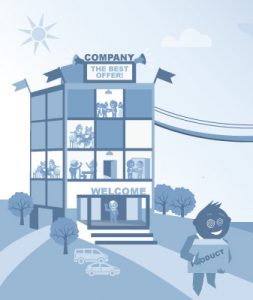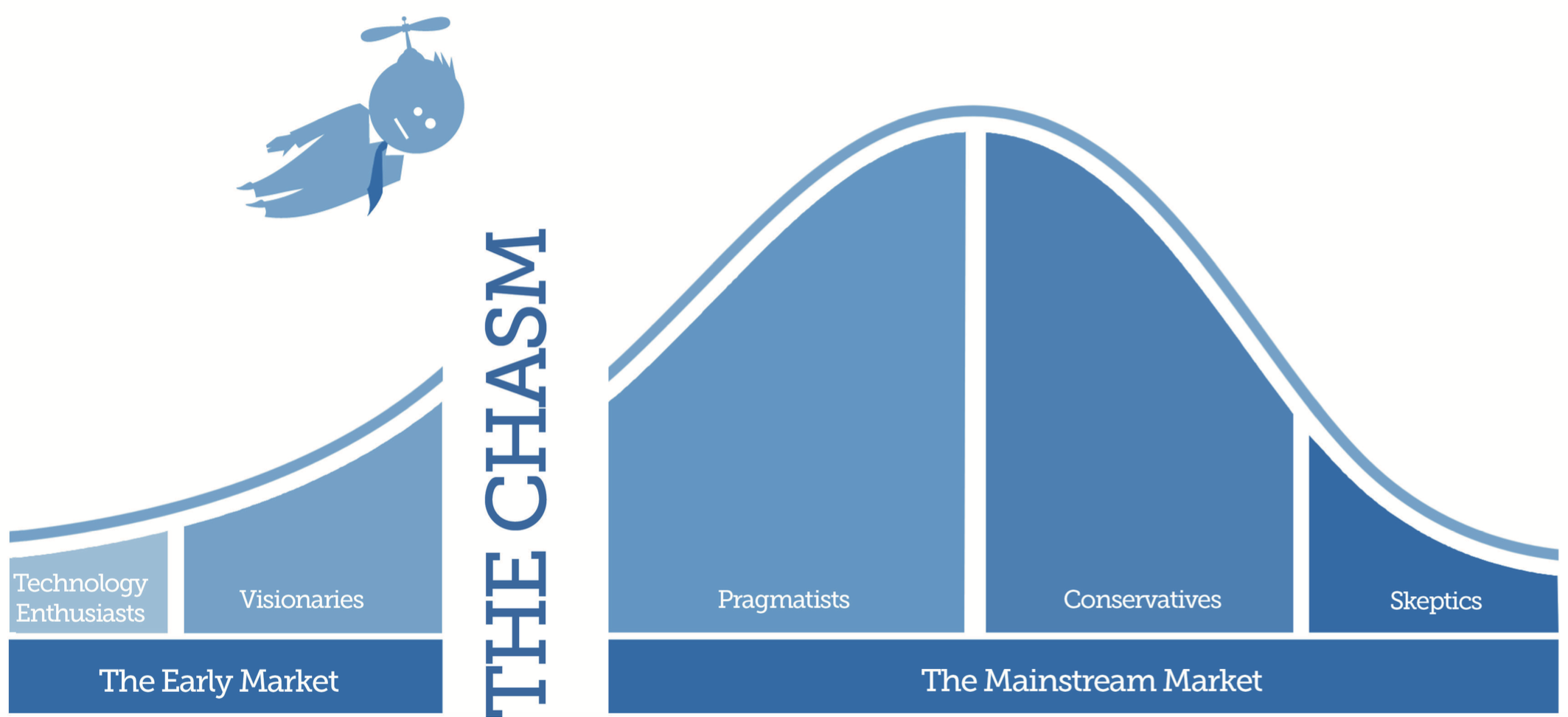Most companies are asymmetric. Do you work for one too?
 Most companies in the world fit into the following description:
Most companies in the world fit into the following description:
In the marketing and sales department they are working hard to make it as easy as possible for potential customers to get in touch with the company.
Their doors will always be open, they measure how fast they answer incoming calls and they monitor the quality of the conversations. They have large display windows to the world where the products and value propositions are carefully exhibited making them look as attractive as possible to people passing by (sometimes these displays look more delicious than a carnivorous plant). The marketing department also have huge, loud speakers facing the public space blasting out propaganda about the wonderful and unique products and services that they make in the company. The big challenges in the marketing department are the very low and declining conversion rates and that the sales department constantly complains about the low quality of the leads generated.
In the sales department they are busy calling on potential customers and they often discuss the need for making even more calls and for improving the sales productivity. The sales staff are convinced that they have many good ideas for improving the situation for their customers if they buy only their products and services, but the sales staff often complain about spending too much time on potential customers that are just window shopping or need a competitive bid.
 All the other departments in the same company (and probably also the marketing and sales executives) have raised fences and walls with barbed wire and broken glass on top in an effort to keep sales people from other companies out. Although the company believe that their own sales people have many great ideas for how they can improve the situation of other companies (their potential customers) they do not believe that sales people from other companies have any good ideas for how they can improve their own situation. They have given instructions to the switchboard and to their secretaries that they should screen out any calls from sales people from other companies and they make a virtue out of not returning any calls from sales people left on their voice mail and emails from the same sources are immediately trashed. While some of their colleagues in the marketing department are inventing on-line advertising promoting their fantastic products and services, most other employees in the company have installed ad-blocking software on all their computing devices.
All the other departments in the same company (and probably also the marketing and sales executives) have raised fences and walls with barbed wire and broken glass on top in an effort to keep sales people from other companies out. Although the company believe that their own sales people have many great ideas for how they can improve the situation of other companies (their potential customers) they do not believe that sales people from other companies have any good ideas for how they can improve their own situation. They have given instructions to the switchboard and to their secretaries that they should screen out any calls from sales people from other companies and they make a virtue out of not returning any calls from sales people left on their voice mail and emails from the same sources are immediately trashed. While some of their colleagues in the marketing department are inventing on-line advertising promoting their fantastic products and services, most other employees in the company have installed ad-blocking software on all their computing devices.
Most companies have this asymmetric anatomy and you most likely work for such a company. Why is it so and what can we do about it?
Most people are afraid of anything new

In 1962 Professor Everett Rogers, a professor of communication studies, gave us the explanation for why most of us will reject anything new. Rogers’ theory was applied by Geoffrey Moore in his seminal book Crossing the Chasm, which came out in a new edition in 2014. The short version is that about 85% of the population are reluctant to try anything new as it not thoroughly tested and because no-one else is using it. Alas, we do not want to listen to anyone claiming that they have something which is new and unique; this is an opening line a lot of sales people use. As we also don’t want to talk to sales people offering us something that we already have, we end up not wanting to talk to any sales people at all.
We are primed to expect that sales people are irrelevant

Most of us have the experience of being called on by sales people when we are very busy with something else (we did pick up the phone, but we hoped it was something more pleasant). We remember sales people as being pushy with irrelevant messages focused on their own company and their own products rather than on our situation and challenges. When from time to time a sales person slips through the fence that we have erected, this experience is repeated and we make our defenses even tighter.
We will call the sales representatives that we need to talk to when we have a need for such a conversation.
What can we do about it?
We all need to sell our products and services and we all need to continuously improve the productivity of our marketing and sales departments, so what can we do against this massive asymmetry in our organizations. Campaigning for a change in behavior, making more people take more calls where no caller-id is displayed or from numbers that they do not recognize will not get my support. Giving more of today’s sales people a chance to get through sounds like a nightmare scenario to me and I believe many will feel the same way. Motivating people to remove ad-blockers to allow all the disturbing and irrelevant propaganda to slip through is an uphill struggle with no chance of success.
 The solution must be found in our own sales and marketing departments. We need to realize that those behind the fences with the budgets are in control and that we better be available when they start looking for inspiration and information on the issues that we have solutions for. We must be easy to find when people look for something related to what we do and we must be extremely relevant to make it on to the list of potential companies that they want to consider when they get that far. We need to bring our VP of marketing and VP of sales into the same room and ask them to find a common definition and design a common process for managing the entire funnel. Statistics and analytics will be major disciplines in the marketing and sales departments of the future. We must develop strategies and implementation plans that allow us to measure the outcome and constantly tweak the activities to improve our conversion rates in marketing as well as in sales. Sales is our most expensive tactical resource and they should only work on the most qualified leads. The days where we make sales people responsible for the entire pipeline (compensating for lack of or poor marketing) are definitely coming to an end. Our sales staff must be able to master solution and challenger sales skills, increasing both the value of each deal, improving the win rate and keeping sales cycles diminishing.
The solution must be found in our own sales and marketing departments. We need to realize that those behind the fences with the budgets are in control and that we better be available when they start looking for inspiration and information on the issues that we have solutions for. We must be easy to find when people look for something related to what we do and we must be extremely relevant to make it on to the list of potential companies that they want to consider when they get that far. We need to bring our VP of marketing and VP of sales into the same room and ask them to find a common definition and design a common process for managing the entire funnel. Statistics and analytics will be major disciplines in the marketing and sales departments of the future. We must develop strategies and implementation plans that allow us to measure the outcome and constantly tweak the activities to improve our conversion rates in marketing as well as in sales. Sales is our most expensive tactical resource and they should only work on the most qualified leads. The days where we make sales people responsible for the entire pipeline (compensating for lack of or poor marketing) are definitely coming to an end. Our sales staff must be able to master solution and challenger sales skills, increasing both the value of each deal, improving the win rate and keeping sales cycles diminishing.
When we experience that sales people become more relevant and make contact on a more timely basis, then I think we will start returning their calls and respond to their emails.








